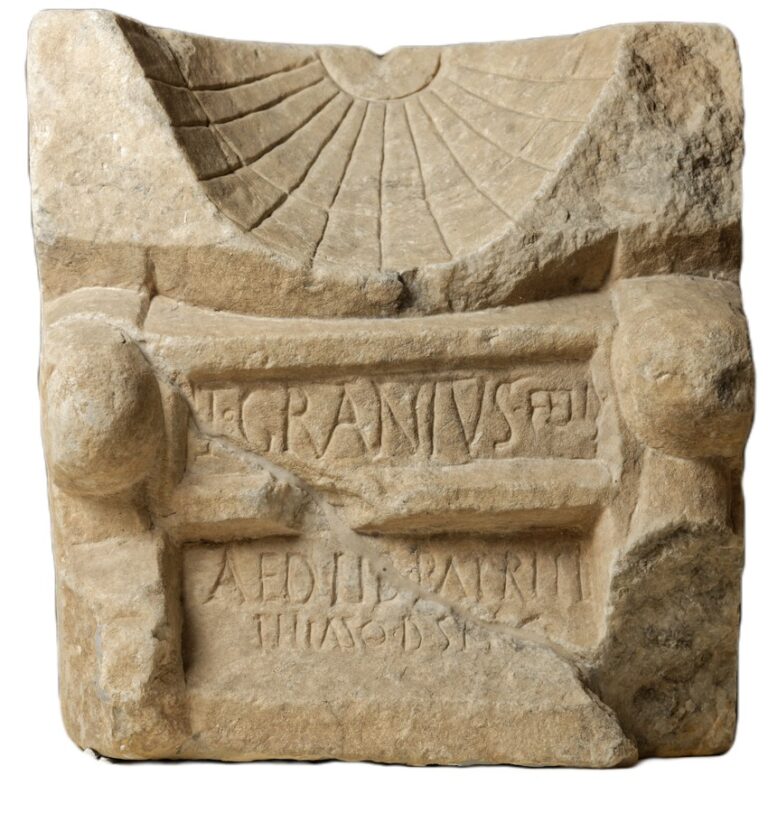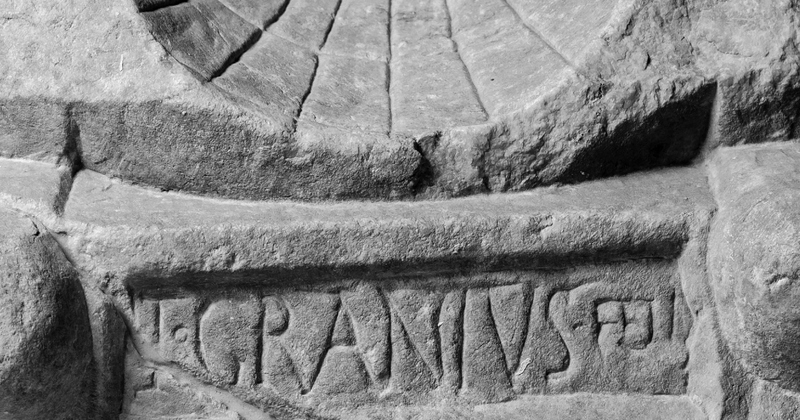The area south of the city, where the sanctuaries of Dion have been discovered since 1973, was previously occupied by private fields, orchards, and tobacco plantations. In 1936 a farmer found an ancient marble object and gave it to the museum. The find was a sundial. It consists of a hemispherical concave plate that bears eleven radial engravings intersected by three curved engravings. The rays indicate the twelve hours of the day and the curves correspond to the winter solstice, the equinox, and the summer solstice. On the upper surface there is a hole for fixing the lost metal gnomon that indicated with its shadow the time of the day.
The resemblance of the engraved grid to the arachne’s (spider) web seems to have given this type of sundial the name “conarachne” mentioned by the Roman architect and engineer Vitruvius (De architectura, IX 8.1).
The sundial is based on an adjoining throne-shaped stand. The latin inscription engraved between the legs of the throne informs us that the astronomical instrument was dedicated by the aedilis T. Granius Felix to Liber pater, the roman equivalent of Dionysos, and to his “thiasus”, the association of the god’s devotees.

The use of the sundial is dated to the imperial times.
In antiquity sundials were use as instruments for measuring time intervals in various activities. The finding of the sundial in a field nearby the theatres, where the sanctuary of Dionysos was probably located, reinforces the hypothesis that it was used to regulate the duration of religious ceremonies or theatrical performances.

